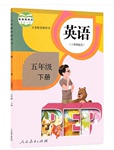题目内容
Pip ______ a gentleman and ______ Estella’s love, who is a beautiful girl.
| A.is bent to becoming; winning | B.is bent on becoming; win |
| C.is determined to become; winning | D.is determined to become; win |
D
解析

 开心快乐假期作业暑假作业西安出版社系列答案
开心快乐假期作业暑假作业西安出版社系列答案 名题训练系列答案
名题训练系列答案 期末集结号系列答案
期末集结号系列答案A gentle wind blew through Jennifer's hair.The golden red sun was 46 .She was on the beach,looking up at the ball.She was amazed by its 47 ,deep red in the middle, 48 fading into yellow. She could hear nothing but the 49 and the seagulls flying up above in the sky.
The atmosphere 50 her.After all she had been through,this is what she 51 .“ It’s getting late,”she thought,“I must go home,my parents will be 52 where I am.”She wondered how her parents would react,when she got home after the three days she was 53 .
The sun had set by now and it was getting 54 .She tried to imagine having her favorite 55 on until she saw her front door It seemed different. 56 had taken care of the outside garden for days.She was 57 : her father was usually so strict about keeping everything clean and tidy, and now…It all seemed 58 .She couldn't understand what was going on.
She entered the 59 .First,she went into the kitchen where she saw a(n) 60 written by her father.It said:“Dear Ellen,there is some coffee ready, I went 61 .”Ellen was her mother but—where was she? On the right side of the hallway was her 62 room.She went in.Then she saw her mother, lying on the bed sleeping.Her 63 looked so tired,as if she hadn’t 64 for days.She was really pale.Jenny just fell asleep beside her.When Jennifer woke up she found something 65 .She was in her cosy bed in her nightclothes.
It felt so good being back home.Suddenly she heard a voice.“Are you feeling better now, dear? You know you got us very, very scared.”
| 【小题1】 |
|
| 【小题2】 |
|
| 【小题3】 |
|
| 【小题4】 |
|
| 【小题5】 |
|
| 【小题6】 |
|
| 【小题7】 |
|
| 【小题8】 |
|
| 【小题9】 |
|
| 【小题10】 |
|
| 【小题11】 |
|
| 【小题12】 |
|
| 【小题13】 |
|
| 【小题14】 |
|
| 【小题15】 |
|
| 【小题16】 |
|
| 【小题17】 |
|
| 【小题18】 |
|
| 【小题19】 |
|
| 【小题20】 |
|
Domestic (驯养的) horses now pull ploughs, race in the Kentucky Derby, and carry police. But early horses weren’t tame (驯服的) enough to perform these kinds of tasks. Scientists think the first interactions humans had with horses were far different from those today.
Thousands of years ago, people killed the wild horses that lived around them for food. Over time, people began to catch the animals and raise them. This was the first step in domestication.
As people began to tame and ride horses, they chose to keep those animals that had more desirable characteristics. For example, people may have chosen to keep horses that had a gentle personality so they could be ridden more easily. People who used horses to pull heavy loads would have chosen to keep stronger animals. Characteristics like strength are partly controlled by the animals’ genes. So as the domesticated horses reproduced, they passed the characteristics on to their young. Each new generation of horses would show more of these chosen characteristics.
Modern-day horse breeds(种类) come in a wide variety of shapes and sizes. This variety didn’t exist in the horse population before domestication. The Shetland horse is one of the smallest breeds— typically reaching only one meter tall. With short, strong legs, the animals were bred to pull coal out of mine shafts (矿井) with low ceilings. Huge horses like the Clydesdale came on the scene around 1700. People bred these heavy, tall horses to pull large vehicles used for carrying heavy loads.
The domestication of horses has had great effects on societies. For example, horses were important tools in the advancement of modern agriculture. Using them to pull ploughs and carry heavy loads allowed people to farm more efficiently. Before they were able to ride horses, humans had to cross land on foot. Riding horses allowed people to travel far greater distance in much less time. That encouraged populations living in different areas to interact with one another. The new form of rapid transportation helped cultures spread around the world.
1.Before domestication horses were ______.
|
A.caught for sports |
B.hunted for food |
|
C.made to pull ploughs |
D.used to carry people |
2.The author uses the Shetland horse as an example to show ______.
|
A.it is smaller than the Clydesdale horse |
|
B.horses used to have gentle personalities |
|
C.some horses have better shapes than others |
|
D.horses were of less variety before domestication |
3.Horses contributed to the spread of culture by ______.
|
A.carrying heavy loads |
B.changing farming methods |
|
C.serving as a means of transport |
D.advancing agriculture in different areas |
4.The passage is mainly about _______.
|
A.why humans domesticated horses |
|
B.how humans and horses needed each other |
|
C.why horses came in different shapes and sizes |
|
D.how human societies and horses influenced each other |